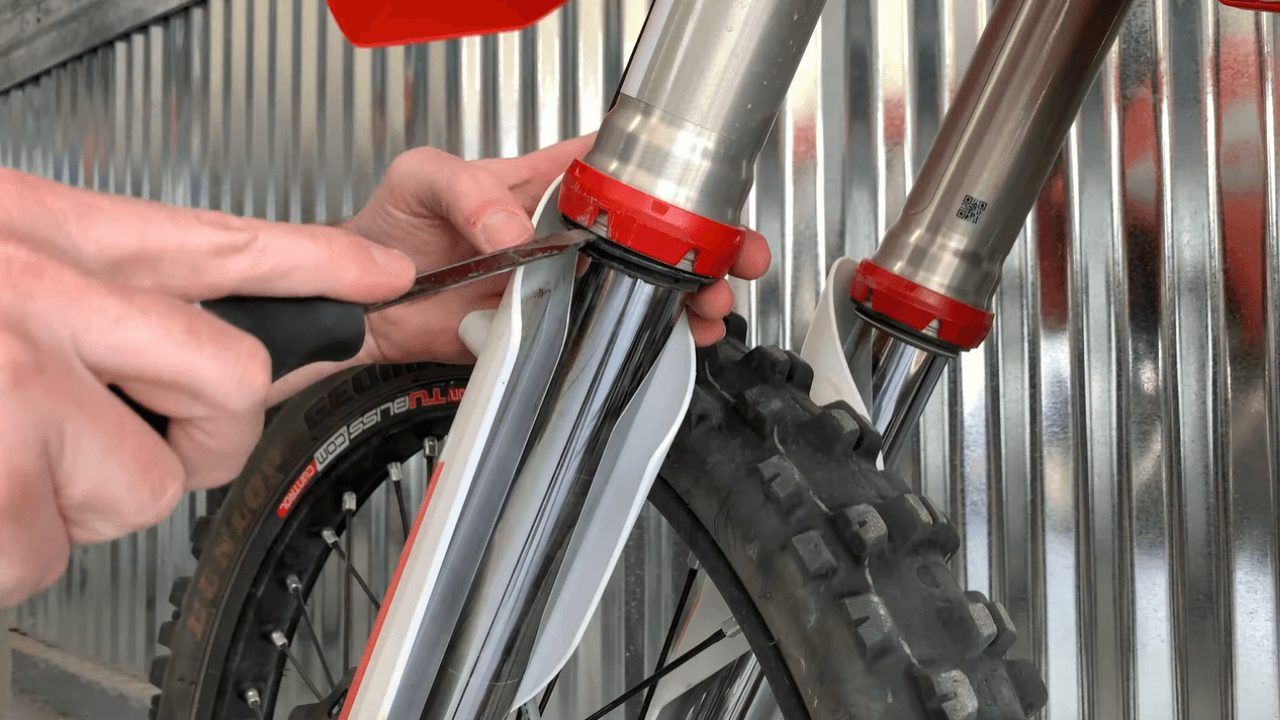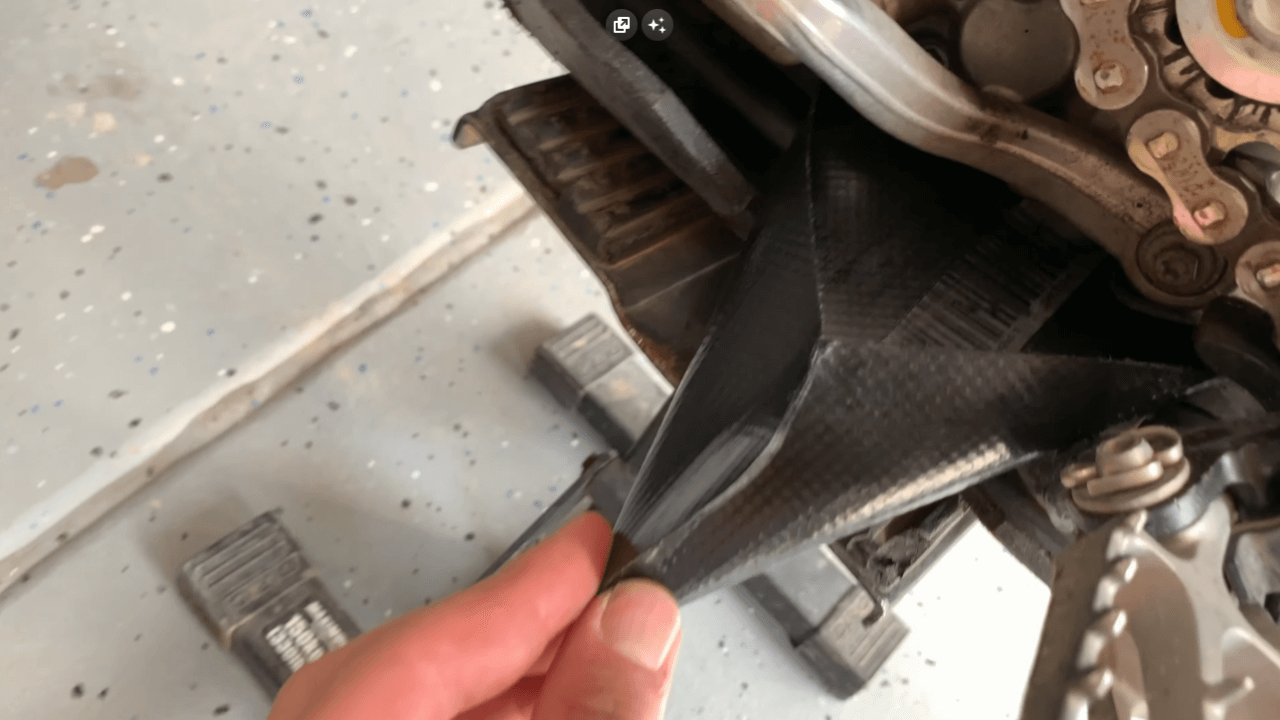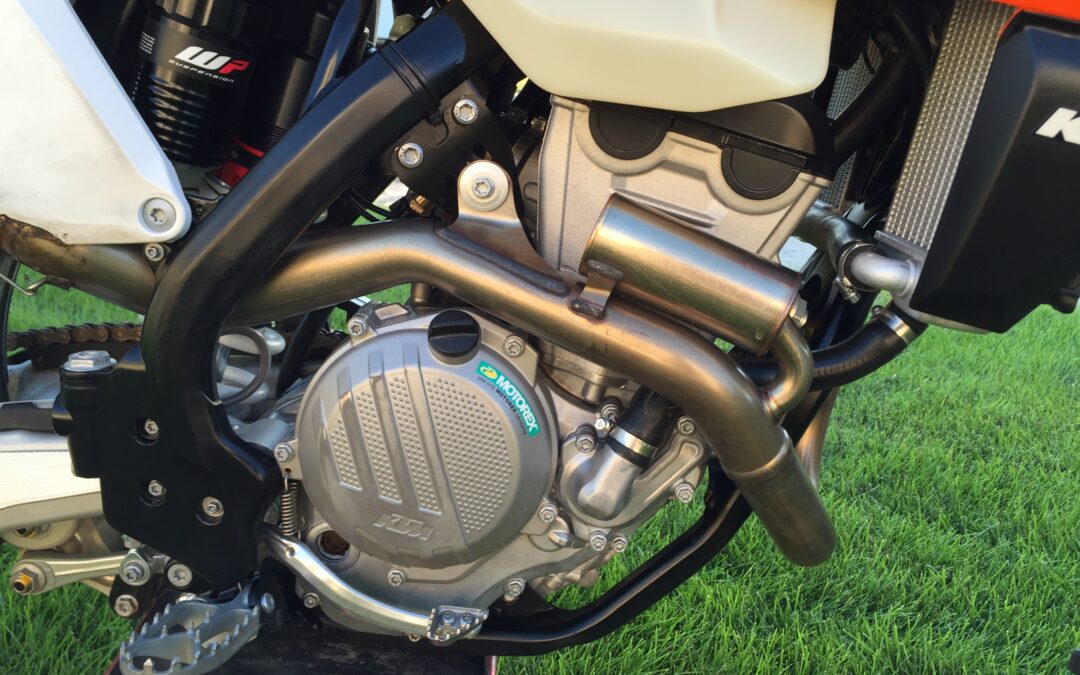Dirt bike maintenance is plays the most important role in order to keep your bike working properly, but more importantly keeping you safe.
If you are like me and love to ride dirt bikes but are not really that excited to work on dirt bikes that’s ok. However, there is some dirt bike maintenance that you cannot skip.
No matter what you do a dirt bike is a ticking time bomb.
You have invested a lot of blood sweat and tears into your dirt bike, and you want your investment to last as long as possible. A clean well maintained dirt bike also has a MUCH better resale value.
Plus, proper maintenance will allow you to enjoy dirt biking more and it will be safer.
Each dirt bike will require a few different processes for proper maintenance. You will maintain a 4 stroke dirt bike different than a 2 stroke dirt bike.
Also, some 4 stroke motors will have the same oil for the gearbox and engine oil. The other 4 stroke motors have the gear oil and engine oil separate. A 2 stroke dirt bike motor has gear oil that needs to be changed but because the engine oil is mixed with the gas to keep the engine lubricated you will not be changing engine oil.
This is REALLY important!!!
Unlike modern cars, where you can drive thousands of kilometer without the need for an oil change and only minimal maintenance, dirt bike requires regular maintenance. Those who work in this field as a hobby, sport, or source of income already know that every time they ride their trail, proper maintenance is needed afterward in order to extend the life of the motorbike.
Over time, doing maintenance is just as fun as riding your motorcycle. Many say that this process adds to the bond between the owner and the bike. Through this article, we will provide an overview of dirt bike maintenance that you can do yourself. Read on!
Lets first start with all the basic bare-bones dirt bike maintenance.
1. SURFACE MAINTENANCE

Surface maintenance does not require more elaborate mechanical knowledge. Therefore, you can do it yourself. For surface maintenance, you can check the following:
• Wear of brake pads/linings
• Check thickness of disc(s)
• Disc brake and hydraulic clutch fluid level (when applicable)
• Check coolant level in the radiator
• Check clutch clearance
• Fluidity of movement of cables (accelerator and clutch)
• Status of wheel bearings, steering gear, and scale
• Engine oil level
• Chain lubrication and slack
• Condition of the tires
• Checking the crown and pinion teeth
• Check the status of the chain guides
• Check lightning tension
• Check the working status of headlight and taillight bulbs
• Check any cuts/tears
• Check any oil leaks
2. THE ENGINE MAINTENANCE
If there’s one item that deserves a lot of attention on a dirt bike, it’s the engine. The maintenance of the entire dirt bike is extremely important, but the engine is one of the most “vital” parts. And it is impossible for your dirt bike to work if it is minimally debilitated.
Therefore, when thinking about dirt bike engine maintenance, you need to consider the various details capable of forming it: oil, fuel, filters, clutch, and cooling. By understanding each one of them separately, it will be possible to keep your motorcycle in good working order, avoiding damages and unpleasant surprises.
I. OIL

It’s impossible to talk about an engine and not immediately remember the lubricating oil. Oil is considered the blood of engines, and lack of it is detrimental to their operation. That is why it is important to check the level recommended by the manufacturer.
Some motorcycles have the famous dipstick, which marks the liquid level. Others have a transparent sight glass on the side of the housing that allows the oil level to be seen.
Whenever you think about starting your motorcycle, make sure the oil level is as recommended. If it is far below the minimum, top-up and try to find out what were the causes of this drastic drop in engine oil levels. Technically, the oil level should not drop. Therefore, it is important to find out what the causes were and repair what is damaged.
Each bike has a recommendation for the type of oil to use. This information can be found in the owner’s manual or on a tag on the engine. In addition, it is important to respect what the manufacturer says to ensure its proper functioning and the effectiveness of the lubricants on the motorcycle.
II. FUEL
For engines to work, a fuel burn must occur and generate force in the motorcycle’s cylinder. It is important to use a quality fuel, since the purer, the better it will be burned to generate this combustion.
The main brands use electronic injection systems in their models, which are capable of reading the fuel and adapting it according to the burning need. However, there are still surviving dirt bikes that use the good old carburetor. For these models, gasolines considered of poor quality are cruel. In addition to not generating enough power, this bad fuel also damages internal parts, causing carbonization and even engine damage.
Some advocate the use of additive gasoline, others of common gasoline and even aviation gasoline, which is of greater purity and also more expensive. Whatever it is, always consider quality over price.
III. FILTERS
Speaking of the mixture that generates the burning of fuel, it is good to remember that oxygen is one of the elements that participate in this explosion.
When the engine starts to move, a quantity of air is sucked into the combustion chamber, and it is filtered so that residues such as sand, dirt, and other objects do not invade the internal part of the engine.
Therefore, the air filter deserves special attention and must be cleaned every time you use the motorcycle. Our suggestion is that you have a spare element and carry it with you always. Keep in mind the filter is an item that requires good quality. Otherwise, a piece could invade the combustion system and cause immense damage.
IV. CLUTCH
To transfer power from the engine to the wheel, the clutch system is indispensable and used much more often than you might think. Separator discs work bathed in the same oil that lubricates the engine. Over time, the friction between these elements causes wear, and the work efficiency drops. Periodically check the status of both items and replace if necessary. When closing the engine, take care that the clutch cover bolts are correctly tightened, avoiding any leakage in the block gasket.
V. COOLING
The liquid cooling system, which is used in most engines, is made up of a radiator, a water pump, and a flow that runs all around the engine. It is always necessary to check if the liquid level is within the recommended range. If not, then something is certainly wrong.
Always check the hoses, the radiator cap, and the operation of the pump, which runs what we call “special coolant fluid” in the engine block. If this liquid is lacking, the engine temperature will rise, the gaskets that are in the seams of the block will burn, and what is left of the water will mix with the oil, causing serious damage.
3. SUSPENSIONS
You will certainly notice how much of your dirt bike suspensions are in the off-road environment, and they are responsible for the way your motorcycle will behave.
It’s no use having an engine set for your ride if the motorcycle’s suspensions are detonated. Without the effective work of this motorcycle item, you will suffer a lot in the off-road environment, and that is why having a set of suspensions in perfect condition is essential.
Regardless of whether you are an amateur or a professional, it is advisable that after every trip, you pull over your bike to the mechanic you trust to carry out maintenance on the suspensions. At this time, it will be necessary to replace the oil and check seals, as well as replace the oil in the rear shock absorber.
4. BEARINGS
Maybe a lot of people don’t know, but dirt bikes leave the factory with bearings without any type of lubricant. So, if you’ve never owned a new dirt bike, it’s very important to take it to your mechanic so he can lubricate the wheel bearings before taking it to the battlefield.
After that, there is no pre-determined period that defines the moment to open and change the bearings. What will indicate this to you is the behavior in the wheels.
Another important point here refers to the spoke tension. Loose or broken spokes lead to more spoke breaks, and this can not only make the bike unstable, but also cause an accident. So, when you’re going to change bearings, or you notice that the spokes are in need of repair, let your mechanic know.
Top 5 Dirt Bike Maintenance Tips
- KEEP YOUR DIRT BIKE CLEAN AT ALL TIMES
Cleaning your off-road motorcycle right after competitions and trails is extremely important to ensure its good maintenance. Mud and other elements that cling to the bike after the trails can end up spoiling some element after it dries, so once you’ve finished your adventure, take a moment to ensure your bike is clean. - OIL CHANGES
Most dirt bikes today use synthetic or semi-synthetic oils, which are of better quality, viscosity, and duration. Never use another specification such as mineral oils which can also compromise engine performance. So, after how long should you change your motor oil? Some say to change the oil after 8-10 hours, while others say you change after every ride. Whatever your case, we recommend that you follow the manufactures recommendations. But remember that regular oil change will make your engine live long. - CHECK AND CLEAN YOUR AIR FILTER
The air filter on your motorcycle has a massive responsibility to prevent sand, dirt, and foreign materials from entering the engine and damaging it.You can only get the job done the right way if it is kept clean and in good repair. If you allow it to get dirtier each time, there will come the point where you won’t be able to avoid all the dirt. In addition, the performance of your dirt bike will be affected by the lack of airflow through the mud-covered breather holes in the filter.
There is nothing to be enthusiastic about cleaning the air filter, but without regular maintenance, it can lead to real piston and barrel damage and also block the carburetor.When cleaning the filter, you always have to check for holes or tears. If there are any, replace them immediately. - CHECK ALL CABLES
Dirt bikes are usually more demanding than normal ones. Therefore, it is important that you periodically check the status of all cables and connections on your motorcycle. A break in the clutch cable, for example, something quite common, can mean the end of your trip.
Therefore, before making your trip, check if all of them are in good condition to avoid your tour being interrupted early due to carelessness. As a precaution, routinely lubricate all of your motorcycle’s cables, and remember to take a spare cable with you in your luggage. - CHECK NUTS AND BOLTS
This maintenance activity is important you do before and after riding a dirt bike. Check all nuts and bolts one by one and tighten if you feel something is loose. It doesn’t take long to do this activity but don’t take it lightly. Because loose nuts or bolts can make your dirt bike a dangerous, deadly vehicle.IMPORTANT: Keeping the mechanics in order is another key point to ensure that your dirt bike remains well maintained. So, take your motorcycle regularly for an overhaul, this can prevent further damage, and it can also help uncover problems at an early stage, which will prevent future wear and tear on your bike.
Which products should I use for dirt bike maintenance?
Using the right type of dirt bike oil or dirt bike air filters really is up to you. There will be a recommend dirt bike engine oil, gearbox oil, and fork oil. There are lots of options to choose from but just make sure it’s a high-quality product.
Rocky Mountain ATV/MC has lots of high-quality dirt bike products to help you keep your dirt bike maintained properly.
Following the owners manual Maintainance plan for your dirt bike will help your dirt bike to run better and last longer. It also increases the resale value if your dirt bike is cleaned and maintained.
No matter what type of dirt bike you have (4 stroke or 2 stroke) they will wear out and break down. Your suspension oil will need to be replaced on average around 60 hours. You will get leaky seals and there is ways to prevent that from happening but at some point you will need to get new fork seals.
4 Stroke vs. 2 Stroke dirt bike maintenance
Generally speaking, 2 strokes are a simpler design and require less overall maintenance than a 4 stroke.
All dirt bikes alike will require a top end and a bottom end rebuild at some point. 2 Strokes are much cheaper to rebuild the motor vs a 4 stroke. 2 strokes have WAY less moving parts.
With 4 Stroke motors as the hours get higher, you can start to see issues with the valves.
No matter what dirt bike you have, make sure you take care of it.
Conclusion
All of the above are simple maintenance you should do on your dirt bike. Don’t forget to do regular service on your dirt bike according to the motorcycle manufacturer’s recommendations. Lastly, remember that not all maintenance can be done by yourself, but it would be great if you could do small things to extend the life of your dirt bike and make your motorcycle experience more comfortable and safe.




